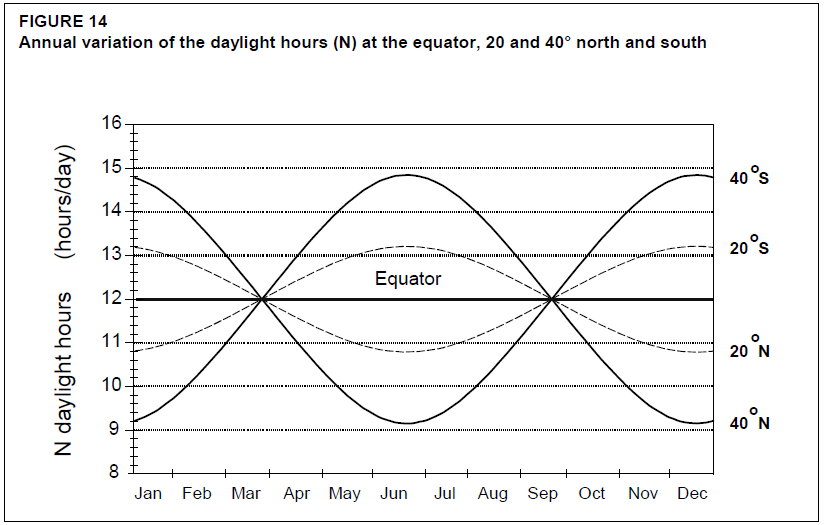Basic Concepts and Equations
The Hamon method (Hamon, 1963) is one of two temperature-based evapotranspiration methods included in HEC-HMS. These method use an empirical relationship between temperature and net radiation. In this method, potential evapotranspiration is proportional to saturated water vapor concentration, at the mean daily air temperature, adjusted for daytime hours. Since transpiration occurs during the day, the daytime hour adjustment accounts for plant response, duration of turbulence, and net radiation. For simulation time steps less than one day, potential evapotranspiration is redistributed for each time step based on a sinusoidal distribution between sunrise and sunset.
Average potential evapotranspiration ETo is computed as (Hamon, 1963):
| 1) |
ET_o = c\frac {N}{12}P_t |
where c is a coefficient, N is the number of daylight hours, and Pt is the saturated water vapor density at the daily mean temperature.
The number of daylight hours N is computed as (Allen et al., 1998):
| 2) |
N = \frac {24}{\pi} \omega_s |
where \omega_s is the sunset hour angle.

The sunset hour angle is computed as (Allen et al., 1998):
| 3) |
\omega_s = arccos[-tan(\phi)tan(\delta)] |
where \phi is the latitude and \delta is the solar declination.
The saturation vapor pressure es at the mean daily temperature T is computed as (Allen et al., 1998):
| 4) |
e_s(T) = 0.6108exp[\frac{17.27T}{T + 237.3}] |
The saturation vapor density Pt is computed as (Wiederhold, 1997):
| 5) |
P_t = \frac {216.7e_s(T)}{T + 273.16} |
Required Parameters
The only parameter required to utilize this method within HEC-HMS is the coefficient [in/g/m3 or mm/g/m3]. In addition, air temperature must be specified as a meteorologic boundary condition.
A Note on Parameter Estimation
While HEC-HMS provides a default coefficient value of 0.0065 in/g/m3 (0.1651 mm/g/m3), this value must be calibrated and validated. In addition, air temperature must be provided as a meteorologic boundary condition.